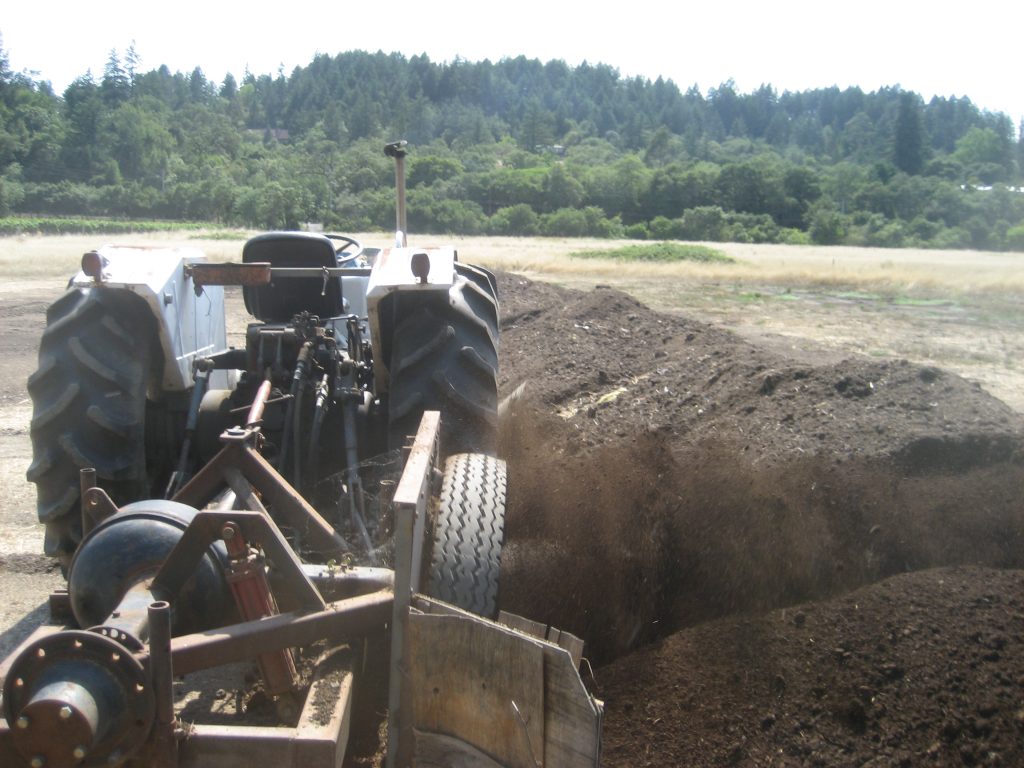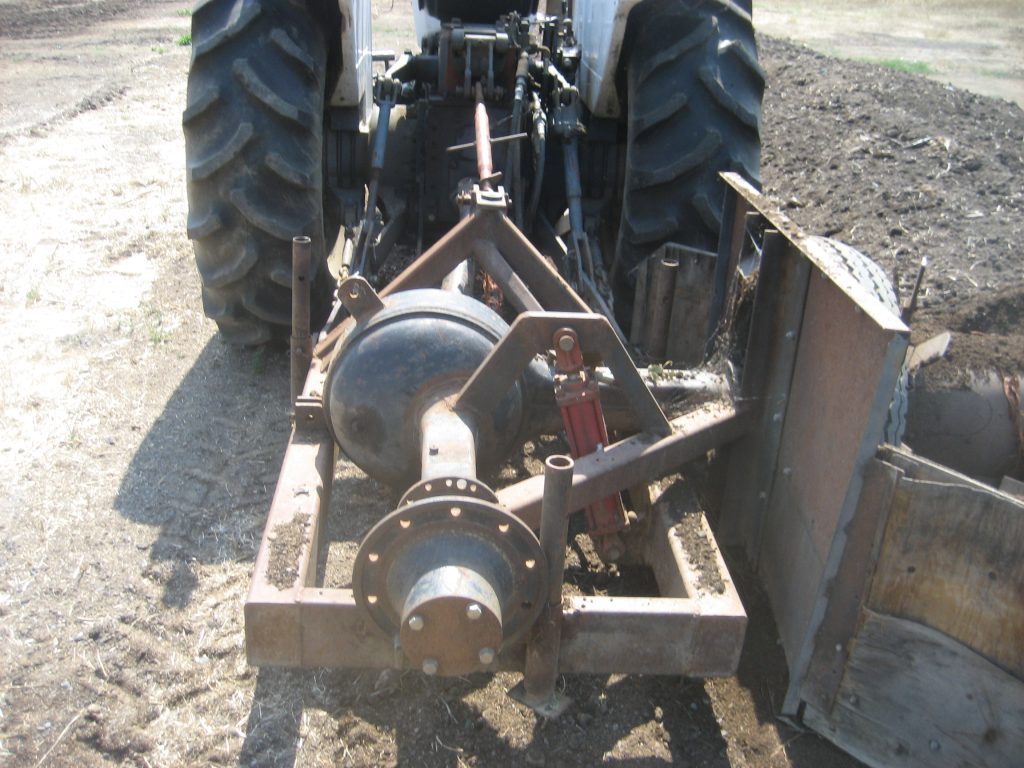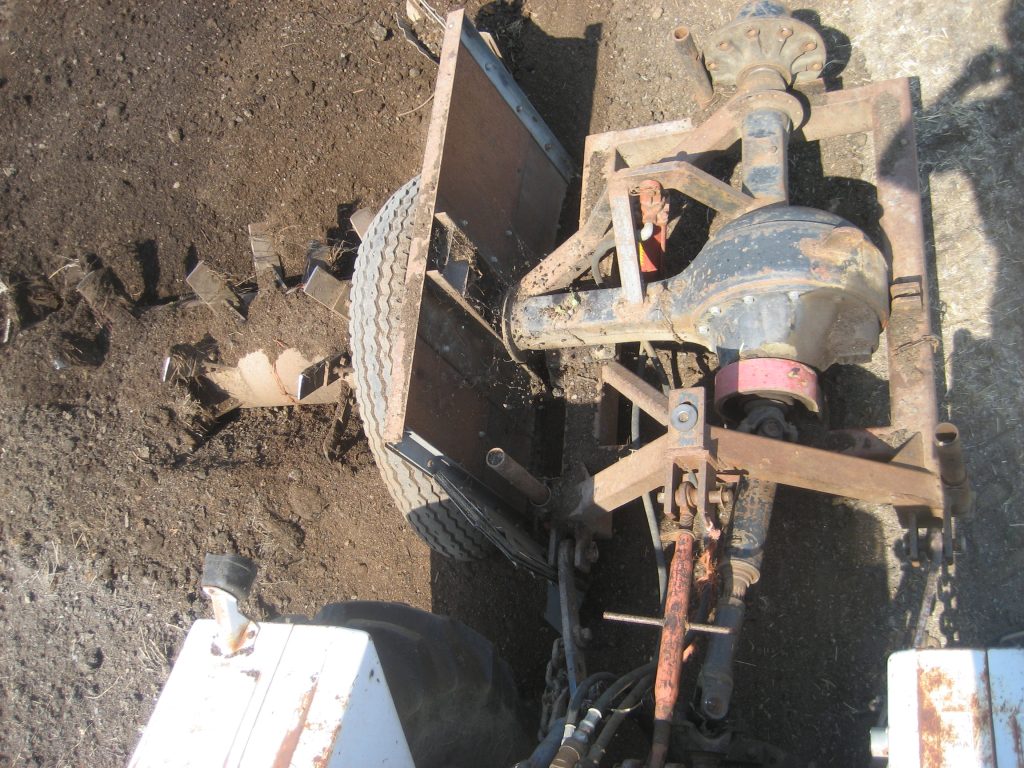In future years compost will become mainstream in farming, and compost heaps will become a regular sight on farms. This homemade turner which was first published five years ago has been a popular workshop project due to low cost and simplicity. It makes a great introduction for composters who are looking for a machine which creates an even, uniform turn to the heap. Something that’s not so easy to achieve with a loader and fork.
Having turned more than 5,000 cu yards of compost with no problems, Paul Bernier is happy to say that his home designed and built compost turning machine is up to the job. It works on the Californian vineyard which he manages alongside his brother. They grow 45 acres of grapes without irrigation, which means they need to conserve moisture in the soil, and composting is an important means of doing this. This year they didn’t get the spring rains which they rely on, so they are turning and mulching the ground with compost to hold in what moisture they have.

The Bernier’s use the compost turner to convert all the waste from their wine operation into plant food for next year’s crops, and it is so successful that compost is their nutrient source for the grapes and also a 5 acre field of row crops.
Five ft rotor gets into the pile
A heavy built rectangular frame mounts on the 3-pt and the tractor PTO connects with the back axle, and differential, off a substantial truck. The PTO drives one of the wheels and the output turner is axle’s drive shaft. The axle can be rotated on the frame so it can be lifted up about 45 degrees. The PTO is connected to the left hand (curb side in the UK) wheel. The right hand half shaft and hub are retained and the hub is locked so the drive goes to the original drive shaft alone.
The drive shaft from the truck has a 5ft long pipe fitted over it and a series of tines bolted to tine holders that are positioned in a spiral. The tines are short lengths of steel plate which are turned in a shallow angle so they catch the compost but don’t spade it up.
The axle is held in place by two solid hoops with fitted grease nipples, the front one fitting round the housing for the half shaft, and the rear around the axle in front of the wheel hub. Welded to the axle is a heavy support strut across the gap from half shaft housing to the drive shaft end, and this has a bracket on which a hydraulic ram (red) is fitted. There’s a bracket with a hole in it welded to the diff casing and when the machine is lifted this fits into a clevis on the frame, allowing the machine to be locked upright for transport.

There’s a robust angled blade mounted between the rotor and the drive, and this goes to the ground when the machine is used in its lowest position. The blade has an angled part at the front which pushes the outside of the swath up, and there’s a further pusher mounted in front of the rear wheel that does the same. This means the machine can be used tight to the compost row.
Strength built in to work at any angle
The way the machine lifts allows it to work at an angle as well as horizontal to the ground, so it can be used to turn the top of a swath of heavy compost before going back and lowering the turner for a second go through. The diff is rated at 20,000lbs and the turning loads are far less than this, so the gearing has plenty in reserve.

Fast worker
Paul says “This machine is pretty efficient, I turned this windrow, approx. 250 cu. yds. in 15 minutes. I have been making around 2500 yards a year with this thing for 4 years, with no problems. I was worried that the hub bearing wouldn’t take the load, but it doesn’t even get hot after hard use.”

